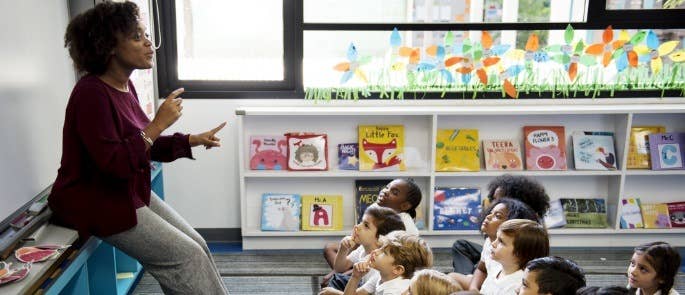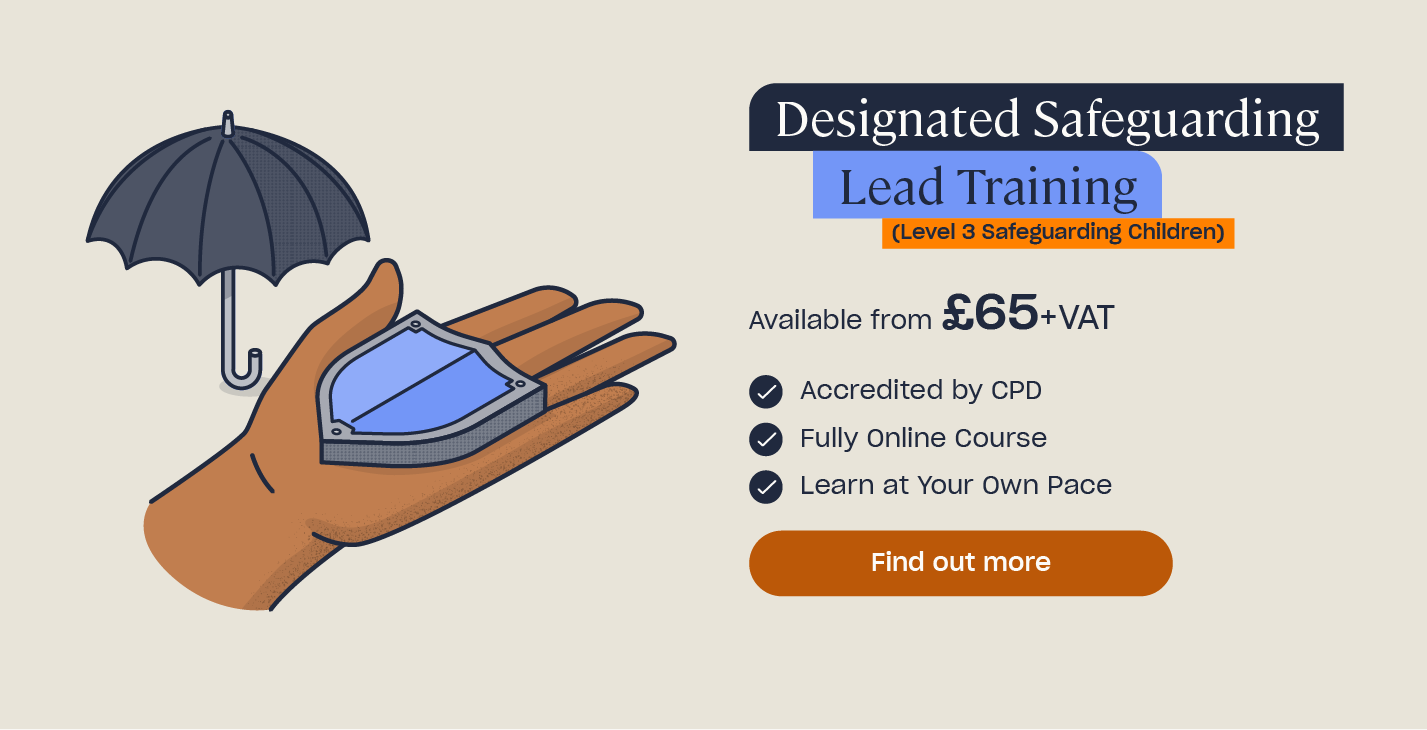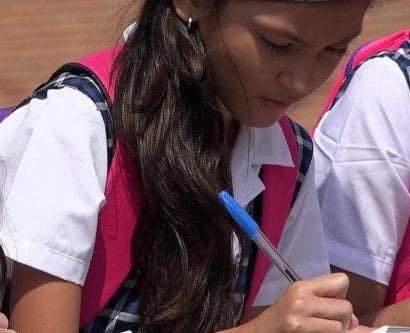Safeguarding Scenarios and Answers for Education
All those who work in the education sector have a legal responsibility to keep the children they work with safe from harm. This includes teachers, teaching assistants, designated safeguarding leads (DSLs), headteachers, lunchtime staff and those who spend time with children in a voluntary capacity. Those who work closely with children are well positioned to recognise safeguarding concerns and act accordingly.
It can be difficult to know what constitutes a safeguarding issue and what actions you should take. However, any safeguarding concern, no matter how seemingly small, must be acted on so that a child can be protected from future undue harm. In this article we will explore examples of safeguarding scenarios that you may come across in your setting and the action that you should take to protect a child’s welfare.
Free Safeguarding INSET Pack
Our safeguarding INSET pack 2025/6 is here, and it’s yours for free! Packed full of valuable resources to help make your next INSET day run smoothly and successfully. Download your free INSET pack here.
What are Safeguarding Issues?
Safeguarding refers to protecting someone’s health, wellbeing and human rights, thereby enabling them to live lives free from harm, abuse and neglect. Safeguarding issues are those that threaten this safety. Examples of safeguarding issues include, but are not limited to:
- Bullying
- Radicalisation
- Sexual Exploitation
- Grooming
- Self-harm
- Sexual harassment and assault
- Forced marriage
- Female genital mutilation (FGM)

Those who work with children have a responsibility to safeguard the children they work with and protect them from harm. This entails spotting signs of abuse and recognising when safeguarding issues may be occurring. It’s important to remember that safeguarding issues do not solely occur within the education setting and children may be subjected to abuse at home. This abuse can be hard to spot and it can therefore be difficult to know if a larger safeguarding issue is occurring.
In order to help you assess whether a child is at risk, we have compiled examples of safeguarding scenarios and answers. These situations mirror those which may occur in your setting and explain the action you should take in similar instances.
Child Safeguarding Scenarios and Answers
Below you will find a number of safeguarding scenarios that echo situations you may face in your setting. It’s important that you can identify the warning signs that a child’s welfare is at risk so that you can act accordingly to protect the child from further harm. These scenarios will help you to identify what constitutes a safeguarding issue, why the scenario is a safeguarding issue and provide insight into what you should do in these situations.
These scenarios can be used as part of safeguarding training to help staff recognise the signs of safeguarding concerns and explore the steps that should be taken. These scenarios can be shared with staff who are in child-facing roles, however it’s important to remember that safeguarding issues are complex and not as easily identifiable as they may appear in these scenarios. These scenarios should therefore be viewed as useful hypothetical situations rather than set parameters which invariably indicate a safeguarding issue.
You must report any safeguarding concerns that you have, regardless of how seemingly small they may appear.
Scenario A
Beth, Aged 8
Beth is known for being an inquisitive and chatty member of the class. However, recently you have noticed a complete change in her behaviour. For the last few weeks Beth has become much quieter and withdrawn. You also notice that in spite of the hot summer weather, Beth has started consistently wearing clothes that cover her whole body, despite the fact she was wearing dresses a few weeks ago.
This is a potential safeguarding issue.
You have no evidence that Beth is at risk of harm or that she has been subjected to harm. You have seen no visual signs of abuse and Beth has not disclosed anything to you that suggests she is being abused. However, due to working closely with her you are aware of the drastic change in her personality. Her sudden social withdrawal and isolation could be a result of her being abused. Moreover, the fact that Beth has started to cover her whole body in warm weather could suggest that she is trying to cover bruises and signs of physical abuse.
Scenario B
James, Aged 16
James is a popular student and part of a large friendship group. A new pupil, Matthew, has recently joined the school and you notice that James and Matthew have quickly become friends and spend a lot of time together. You also notice that as James spends more time with Matthew, he begins to distance himself from his large friendship group. Jenny, one of the girls from James’ old friendship group approaches you after school one day with concerns. She mentions that when she tried to talk to James about the change in their friendship he got very annoyed and angry. James then apparently continued to say that ‘everyone else is blind to what is going on in Britain’ and that his friendship with Matthew is enabling him to ‘see sense.’ He allegedly made what Jenny interpreted as a threat, saying ‘just you wait and see what we have planned.’
This is a potential safeguarding issue.
Although you haven’t heard James make these comments directly you must take Jenny’s claim seriously as his behaviour indicates that he is being radicalised. The signs of radicalisation include distancing from old friends, becoming argumentative and sympathetic to extremist ideologies. James’ claim that Matthew has helped him to ‘see sense’, alongside distancing himself from his old friends, suggests that he is being radicalised by or alongside Matthew. This has the potential to cause harm to other people if the threat of potentially violent action is carried out.
The government has a range of information on identifying and supporting individuals who may be at risk of radicalisation. You can find out more guidance on Channel and Prevent Multi-Agency Panel (PMAP) here.

Scenario C
A’isha, Aged 13
A’isha has a reputation for being disruptive in class and behavioural concerns have been raised in the past. The DSL believes that A’isha’s disruptive tendencies are a result of her parents’ recent divorce and a desire for attention. During break you witness A’isha showing her friends her new mobile phone and telling them that it was a gift from her new boyfriend. As you leave work later that day you see A’isha kissing someone who looks to be at least 18 years old. A’isha and her friends then get into the car with her ‘boyfriend’ and drive off.
This is a safeguarding issue.
The fact that A’isha’s ‘boyfriend’ picked her up in a car indicates that he is at least 17 years old, though you suspect he is in fact much older. As A’isha is under 16 she cannot consent to a sexual relationship. You know that A’isha is quite vulnerable at the moment and actively seeking attention due to her parents’ divorce. You suspect that her ‘boyfriend’ has been showing her the attention she wants and showering her with excessive gifts in an attempt to groom her. You are therefore concerned that she may be a victim of sexual exploitation.
Scenario D
Freddie, Aged 17
Freddie is a Sixth Form pupil who you have taught History to for the last five years. You notice that he has recently become more vocal and has gained a lot of confidence. During class, Freddie and his friends are talking loudly amongst themselves. As you go over to them, you see that they are looking at a picture of one of the school’s female teachers on their phone. The photo is sexually explicit and upon asking who the phone belongs to you learn that it is Freddie’s. After class Freddie tells you that the teacher sent the picture to him directly and that they have met up outside of school on a few occasions.
This is a safeguarding issue.
The teacher is clearly abusing their position and authority and engaging in an inappropriate relationship with Freddie. It is against the law for a person aged over 18 to have any sexual contact with someone under 18 if the older person holds a position of trust. As Freddie is 17 years old and a student of the teacher he is romantically involved with, he is considered a vulnerable individual who has been taken advantage of.
What Action Should You Take?
You must report all safeguarding concerns that you have, regardless of how seemingly small or low-level they may be.
Whilst the scenarios above explore different safeguarding issues, it’s likely that the course of action you take will be the same in the majority of instances. You should firstly make a written record of your observations and any concerns that you have. This should be as objective as possible and state clearly what you have observed and any comments from the child in question. You should then follow your organisation’s child protection policy which will usually involve raising these concerns with the DSL.

All employees have a duty to ensure that children are kept safe. The DSL is responsible for overseeing this and liaising with external child welfare organisations if necessary. As such, you should raise all concerns with the DSL as soon as possible. It’s important that you take the time to discuss your concerns in full and don’t try to ‘squeeze in’ a quick 10 minute chat. This will enable you to clearly discuss your concerns and present any evidence or observations that you may have. The DSL will have extensive knowledge in safeguarding and will know how to correctly respond to your concerns. This may include making a referral or liaising with children’s social care if necessary.
How to Report Concerns
If, for whatever reason, you do not feel that appropriate action has been taken or your concerns have not been adequately listened to then you can contact the NSPCC.
- NSPCC Whistleblowing Advice Line
- Call – 0800 028 0285
- Email – help@NSPCC.org.uk
If you believe a child to be at risk of immediate harm you must immediately call the police on 999.
Staff Training
An important way to ensure that staff are fully aware of their safeguarding duties is for them to undertake training. This training can be internal, external or online and will provide staff with the necessary safeguarding knowledge to keep children safe. High Speed Training has a wide range of courses which can support staff training including:
- Introduction to Safeguarding (Level 1)
- Advanced Safeguarding (Level 2)
- Designated Safeguarding Lead (Level 3)
All those who work with children have a responsibility to keep them safe. As an employee in the education sector you share this important duty. As such, it’s vital that you learn how to recognise the warning signs of safeguarding concerns. The scenarios above demonstrate the complexity of the issue and how safeguarding issues can manifest in a myriad of ways. Nevertheless, in each instance it’s imperative that action is taken to keep children safe and prevent any future undue harm.
Further Resources:
- Free Safeguarding INSET Pack
- Guide to Safeguarding Children Legislation
- Safeguarding Responsibilities of School Staff












